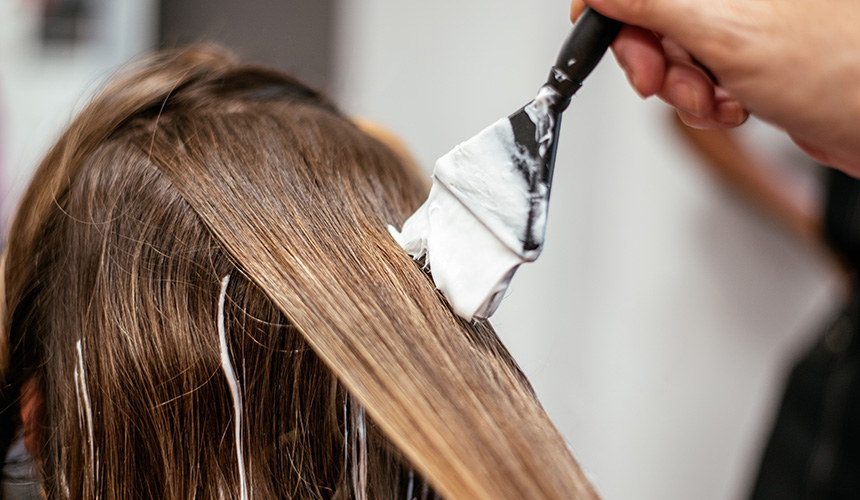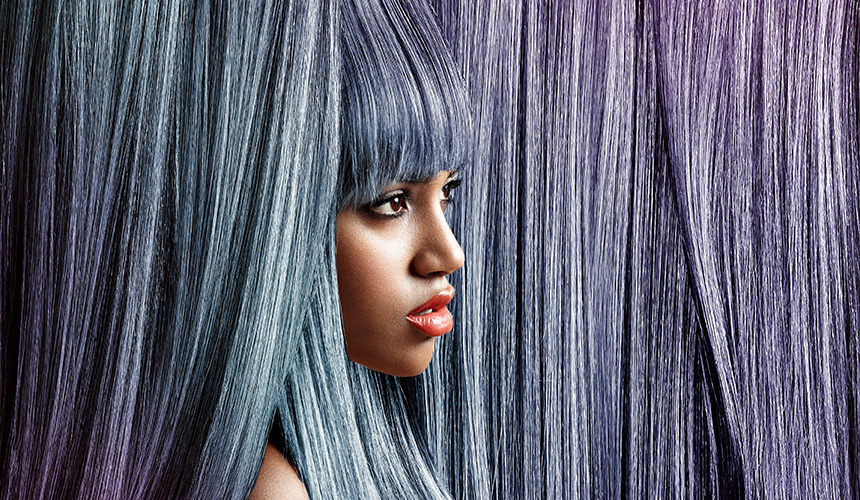Colored hair is chemically altered which makes it prone to dryness, breakage, and damage. It can quickly become dull and lifeless if you don’t maintain it properly or account for the changes permanent color makes to your hair. Let’s explore what happens once you apply permanent hair dye and learn how to avoid damage when managing your colored hair.
What is Color Treated Hair?
Color treated hair is hair that has been exposed to any treatment that includes permanent hair dye. This type of hair dye oxidizes and opens up the hair cuticle so the color can penetrate and deposit onto the hair shafts. These oxidative dyes contain compounds that cause swelling of the hair cuticle, while hydrogen peroxide lightens the hair and removes its natural color. They usually contain ammonia as well which raises the pH level of our hair and lifts up the cuticle allowing color to penetrate deeper into the hair. This way permanent hair dyes change the natural hair color by embedding the dye deeply into the hair, which lasts until it grows out.
How to Prevent Damage With Colored Hair
Skipping the heat tools and going between washes as long as possible will give your hair a break and allow natural oils to produce. The more you wash your hair, the more fading will occur. Leave in conditioner is highly recommended to protect the hair from extended time in the sun, or water, especially for your ends which are the most fragile part of your hair. Leave in treatment will boost nourishment, make hair easier to manage, and less prone to breakage and damage.

Mixing Conditioner With Hair Dye?
Mixing conditioner with hair dye sounds like a good option If you want to refresh your hair color while adding a bit of nourishment. However, not every hair dye can be mixed with conditioner. Permanent and semi-permanent hair dyes that need developers won’t combine well with conditioner. As mentioned above, higher pH levels are needed to open the hair cuticle so it can absorb this type of hair dye, and conditioners are usually acidic (low pH levels) which causes hair cuticles to close. This can cause the hair color to bond unevenly and fade faster, or not bond at all.
Whether you mix conditioner or water with hair dye, you will be weakening the strength of the dye, therefore making it less effective in lifting or penetration of the color. Typically, a retouch is done with dye combined with equal parts of color and 20 volume peroxide. Conditioner or water will dilute the peroxide’s strength and may be used when doing a root retouch, but only for the last stage of the coloring when taking the color down to the ends to refresh the previously dyed hair that is not needing as much lift or penetration. Conditioning after the dye removal shampoo is recommended to close the cuticle and maintain moisture in the hair.
Apple Cider Vinegar for Colored Hair
Hair dyes raise the pH levels of our hair and leave the cuticles open and more susceptible to damage. Apple cider vinegar balances the pH levels of hair and scalp by lowering its value to slightly acidic, which is natural for the hair and scalp (pH value around 5.5). This seals hair cuticles and makes hair healthier, shinier, and smoother. Apple cider vinegar also cleanses mineral and oil buildup on your hair, which can prolong the time between shampoos and help your hair color last longer. So yes, not only is apple cider vinegar safe for colored hair, but it can also bring some benefits and contribute to the overall health of your hair and scalp.
Hair that’s been treated with permanent hair dye operates under a different set of rules. It requires additional care and choosing the right products that won’t damage your hair – natural ingredients that work with dyed hair and formula without harsh chemicals make an amazing starting point. For those with really bold hair dye treatments, such as a bright color, you may want to skip the shampoo and use conditioner to wash your hair – this will help to preserve the color. Whereas for less bold treatments, Phillip Adam shampoos with apple cider vinegar are color safe and great for regular use.

